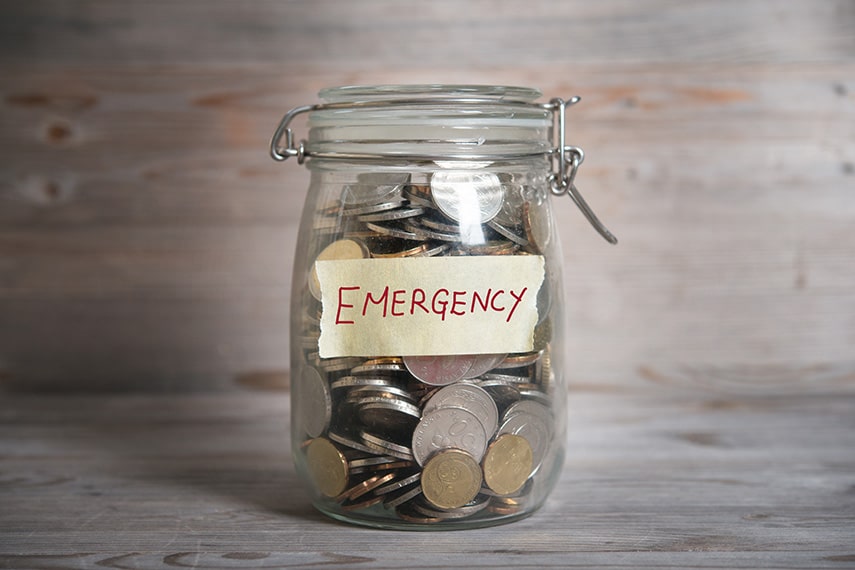War’s Effects on Gold, Oil, and Markets
If you had told someone at the beginning of 2022 that Russia would invade Ukraine, they wouldn’t have believed you The idea that in this day and age any country would just unilaterally attack...
Economy

With the federal government shutdown already record-breaking at over one month in duration, more and more stories are circulating about the harm federal employees and their families are facing. Having already missed one paycheck, federal employees are about to miss a second. And while they will receive back pay once the government reopens, that doesn’t do much to help their immediate finances. With credit card bills to pay, car payments to make, and mortgages to pay off, hundreds of thousands of federal employees are starting to have a tough time making ends meet. It’s especially difficult coming right after the Christmas season, when many households have spent a lot of money planning vacations and purchasing Christmas gifts.
Thankfully many lenders are willing to work with federal employees who are furloughed or having to work without pay, ensuring that they won’t be too adversely affected by a closure that no one could have expected would last this long. Shops and eateries are offering specials, including free food, to employees affected by the shutdown. People are coming together to help those in need. And while all of that is well and good, it still highlights a very dire situation facing most American households: they are unprepared for a financial emergency.
We know that 78% of American households live paycheck to paycheck. Missing one paycheck can be a financial strain, but missing two paychecks can be a financial calamity. That’s all the more reason for households to save up money to prepare for financial emergencies. While no one could have predicted that the government shutdown would last this long, many employees could have been better off had they been able to save money for a rainy day fund.
Over 60% of American households are unable to afford even a $1,000 emergency expense. That means that many federal employees are likely facing severe financial difficulty right now. That’s compounded by not being able to take up outside employment. While it’s too late now to try to build up an emergency fund, those employees may want to start thinking about putting aside some money in the future.
Building up an emergency fund requires no more skill than simple accounting, but it does require discipline. All you have to do is make sure that the amount of money you take in is more than the amount you spend. Here’s how to do that.
This one should be relatively easy. Most people who receive a regular paycheck get a pay stub that shows them how much money they make each pay period, how much is deducted for taxes, Social Security, retirement, etc. That makes it easy to figure out how much money you make per month.
Many people don’t keep track of their spending and would likely be shocked at how much they spend. They may know the size of their credit card bill, but most credit card billing periods begin and end mid-month, making it difficult to compare spending against income.
Here’s where it can help to keep a spreadsheet of all the things you spend money on. All credit card and check payments can go into the spreadsheet, while cash transactions can either be booked as a one-time spend when you take money out of the ATM or listed individually along with your other payments. Keep a log for a few months so that you get a good idea of how much you regularly spend each month.
Once you have an idea of how much you spend, identify what you really need. Can you cut out that daily coffee at Starbucks? How about making a sandwich every day and taking it to work instead of buying one at the cafeteria? And do you really need a subscription to Netflix, Hulu, and cable TV? Once you begin to identify areas to cut back it can be much easier to start saving.
Money that you never see will never be missed. That’s the theory behind paycheck deductions for 401(k) and IRA accounts, and it can work for your emergency fund too. If you’ve identified that you can save 5%, 10%, or 15% of your paycheck, have your direct deposit split between two separate accounts. It can be helpful to have them at two different institutions too so that you’re not tempted to draw on your emergency savings too soon.
You won’t miss the money because it was never in your checking account to begin with. And before you know it you’ll have a nice little emergency nest egg built up. The general rule of thumb is that you want to have at least 3-6 months worth of expenses saved up. So if you spend $3,000 a month, you’ll want to have $9,000-18,000 of money in the bank. That would certainly help those furloughed federal employees, although given how long the shutdown might still last, even three months of savings might not be enough.
Of course cash isn’t a great investment most of the time, as it loses value to inflation and doesn’t offer any return. So once you find yourself with that six-month nest egg of savings, any excess funds that you accrue you’ll want to invest for the future.
Hopefully you’re already putting money away for your retirement, so these extra funds will be gravy on top of your existing accounts. Whether you decide to invest in stocks, government bonds, or countercyclical assets such as gold, the discipline you instill in yourself by saving and investing should stand you in good stead through the rest of your career and into retirement.



